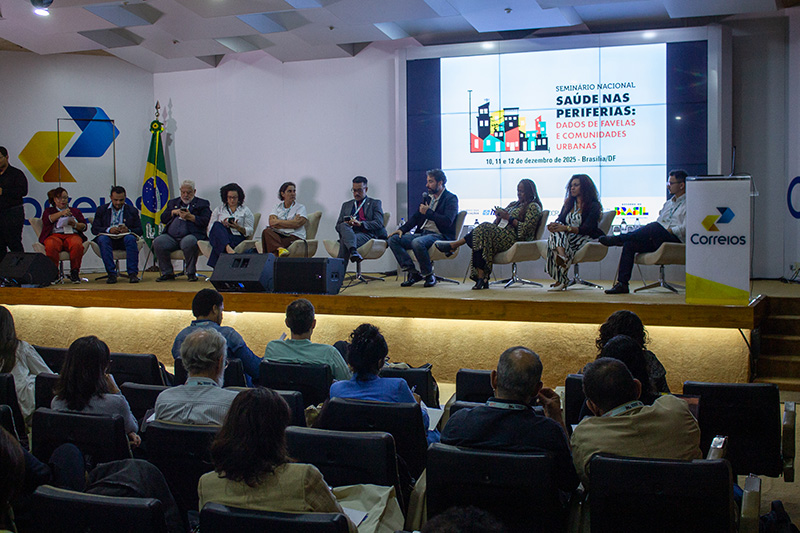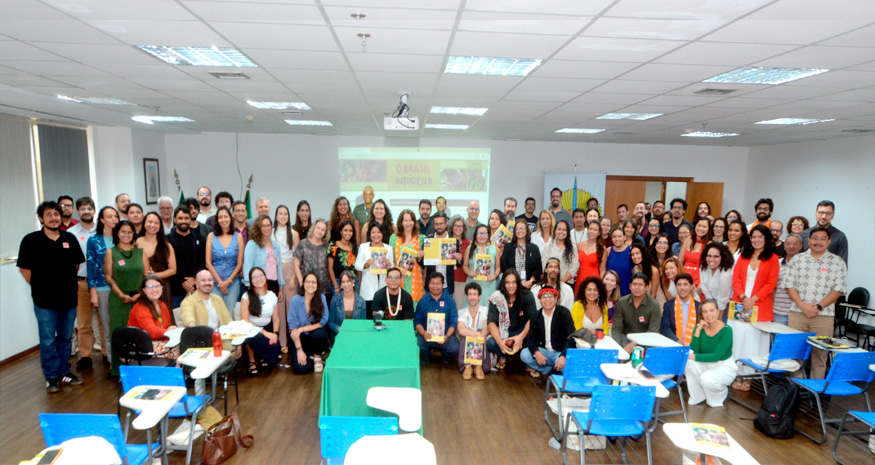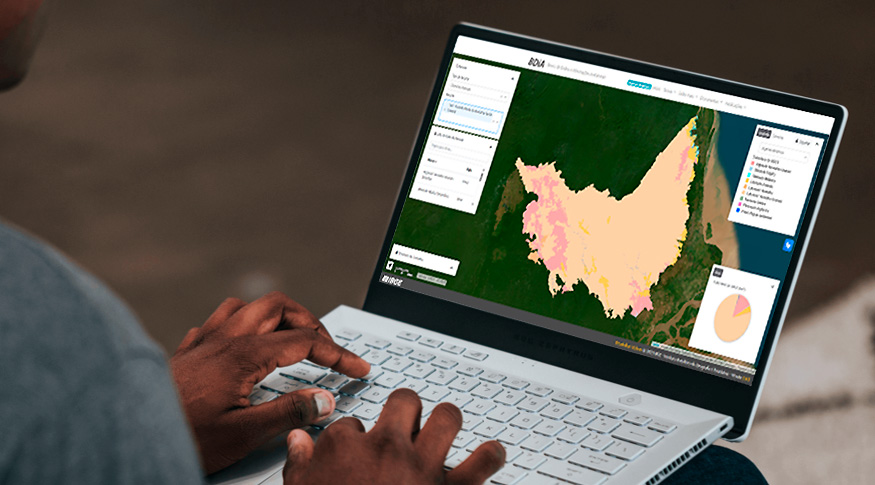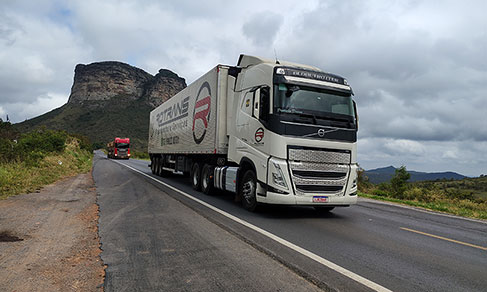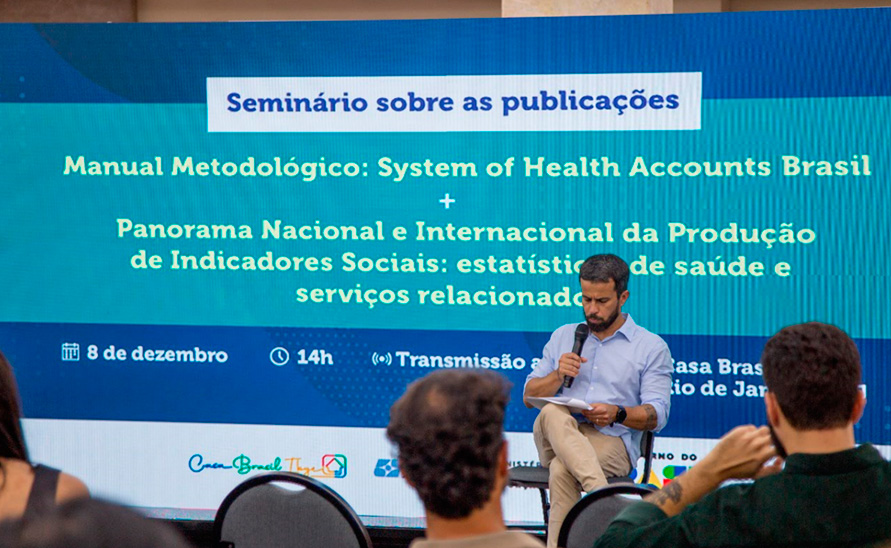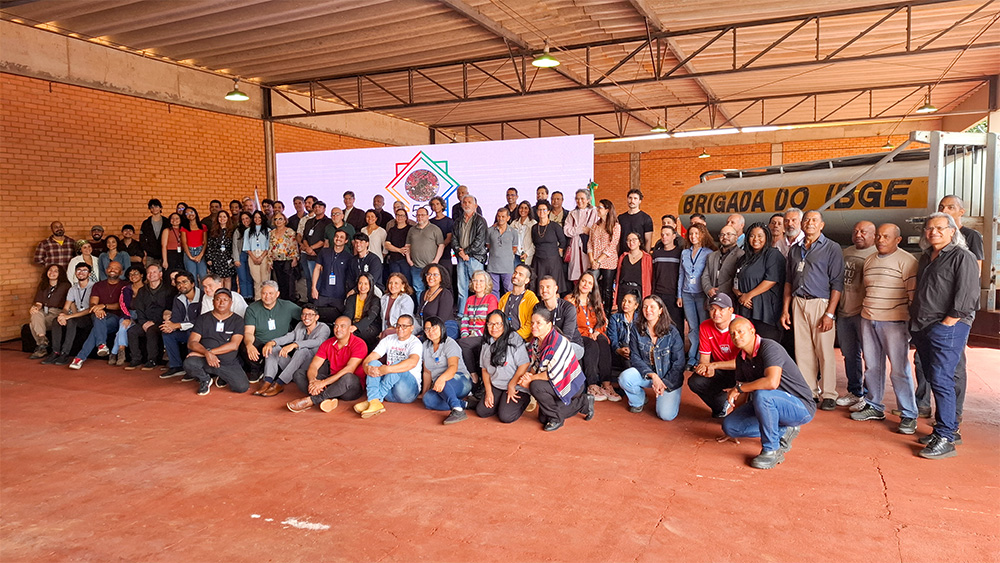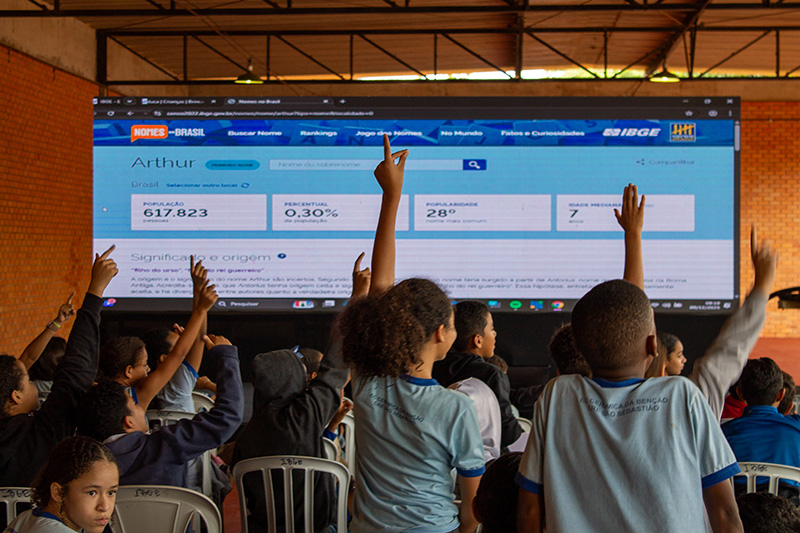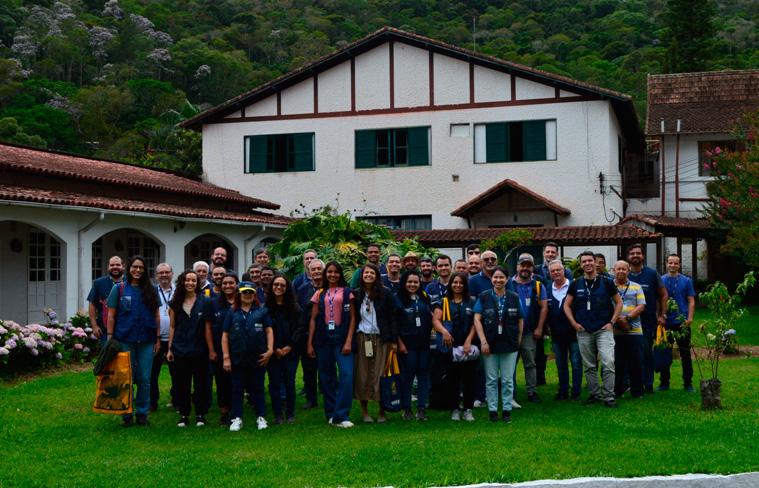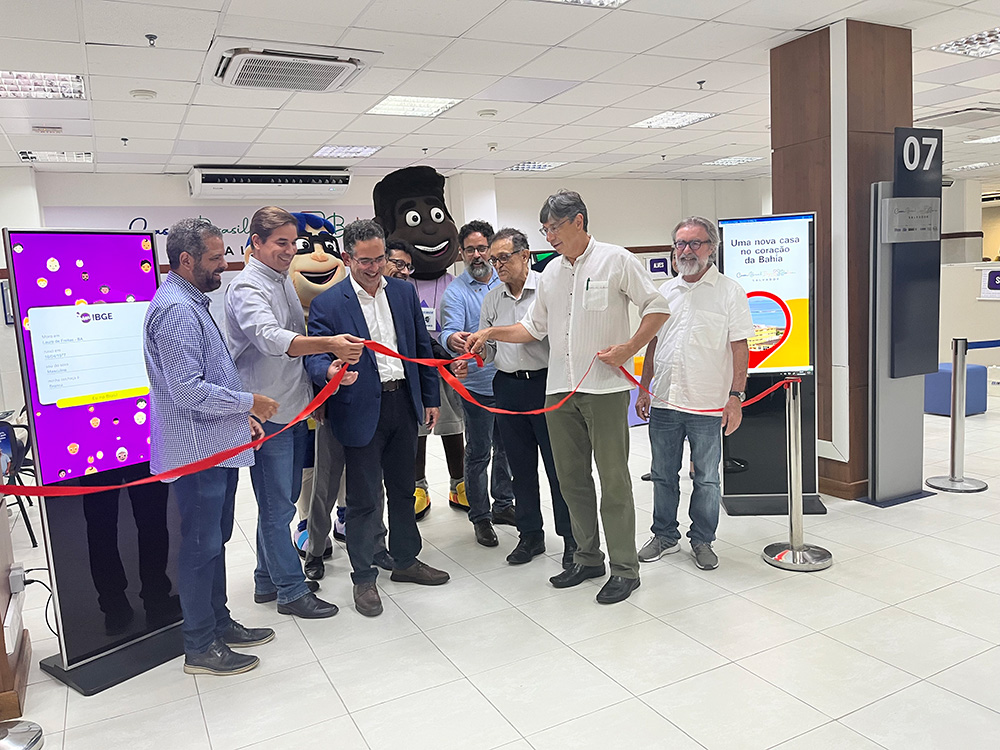Continuous PNAD
Number of app-based workers grew 25.4% between 2022 and 2024
October 17, 2025 10h00 AM | Last Updated: October 30, 2025 09h14 AM
Highlights
- In 2024, Brazil had 1.7 million people working through digital platforms and service apps (passenger transportation, food and product delivery, general or professional services), equivalent to 1.9% of the population employed in the private sector.
- There was a 25.4% increase in the number of people working on app-based jobs between 2022 and 2024, or an additional 335,000 workers.
- Of the total number of app-based workers, 58.3% (or 964,000) performed their primary work through transportation apps, including taxis. Meanwhile, 29.3% (or 485,000) were delivery app-based workers, while service app-based workers accounted for 7.8% (294,000).
- Approximately 86.1% of platform workers were self-employed and 6.1% were employers. In 2024, the earnings of platform workers (R$2,996) was 4.2% higher than the average eaarnings of non-platform workers (R$2,875). This difference decreased compared to 2022 (9.4%).
- On the other hand, compared to non-platform workers, app-based workers worked more hours per week (44.8h vs. 39.3h). Thus, platform workers (R$15.4/hour) recorded an hourly income 8.3% lower than that of non-platform workers (R$16.8/hour).
- While 43.8% of non-platform workers were informal, among platform workers this percentage was 71.1%. Furthermore, platform workers had fewer workers contributing to social security (35.9% vs. 61.9%). In 2024, there were 1.9 million employed persons who worked as car drivers as their main job. Of this total, 43.8% (824,000) worked with apps, while 56.2% (1.1 million) did not use apps for their work.
- When considering average hourly earnings, very similar values are observed between app drivers (R$13.9/hour) and other employed car drivers (R$13.7/hour). Formal non-platform drivers (R$14.7/hour) had higher hourly earnings, on average, than those employed by platform drivers.
- There were 1.1 million employed persons who worked as motorcycle drivers in 2024. Of this total, 33.5% (351 thousand persons) carried out work through apps, while 66.5% (698 thousand) did not, that is, around 1/3 of motorcyclists were app-based in 2024, increasing their participation compared to 2022, when they represented around 1/4.
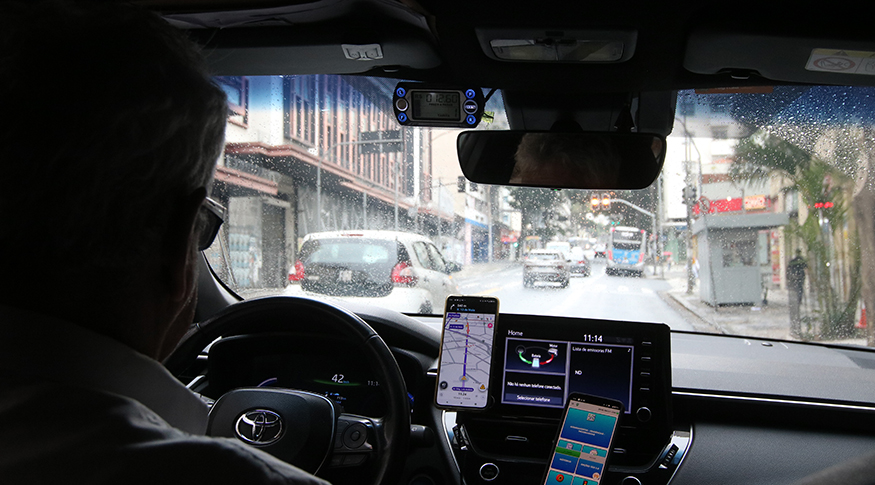
In the third quarter of 2024, Brazil had 1.7 million people working through digital platforms and service apps, including ride-hailing, food and product delivery, and general or professional services, equivalent to 1.9% of the private sector workforce. Compared to 2022, when there were 1.3 million people in these occupations, there was an increase of 335,000 (25.4%).
The data, released today (17) by the IBGE, are from the Work through Digital Platforms 2024 module of the Continuous PNAD. This module is experimental and results from an agreement with the State University of Campinas (Unicamp) and the Public Ministry of Labor (MPT).
By application type, 58.3% (964,000) performed their main job through passenger transportation apps, whether taxi or non-taxi apps, with 53.1% (878,000) working in private passenger transportation (excluding taxis) and 13.8% (228,000) working in apps for taxi drivers. In turn, 29.3% (485,000) worked for food and grocery delivery apps, while 17.8% (294,000) worked for general or professional service apps.
Between 2022 and 2024, there was growth in the total number of people working through all types of apps surveyed, but the highlight was general or professional service platforms, which saw a 52.1% increase (from 193,000 to 294,000 people). In terms of quantity, the biggest increase was in passenger transportation (excluding taxis), which rose from 680,000 to 878,000 people (an increase of 29.2%).
The Southeast Region accounted for more than half of Brazil's platform workers: 53.7%. By application type, the Northeast had the highest proportion of workers working for private passenger transportation apps (excluding taxis): 69.4% of the Region's total platform workers. The North Region had the lowest proportion of people working for general or professional service apps, 8.3%, less than half the national rate, while the highest shares were recorded in the South (23.2%) and Southeast (20.4%) Regions.
The data show that 86.1% of platform workers were self-employed and 6.1% were employers. Among the activity groups, 72.5% of platform workers worked in Transportation, storage and mailing activities, reflecting the fact that passenger transportation and delivery service apps were the most widespread in the country.
The occupational group of plant and machine operators and assemblers (72.1%) was also predominant, including motorcycle and car drivers. Elementary occupations, on the other hand, represented only 1.7% of platform workers, while they accounted for 17.4% of the total employed in the private sector, the second largest occupational group. The group of science and intellectual professionals, comprised of a generally more qualified workforce, accounted for 5.0% of the total employed in app-based jobs, a lower share than that recorded for the total employed in the private sector (9.4%).
"The group of science and intellectual professionals, which encompasses various occupations such as IT professionals, graphic designers, architects, translators, doctors, among others, although representing a small portion of platform workers, was the one that expanded its share the most among these workers (a 1.5 percentage point increase compared to 2022). This growth may signal greater diversification of occupations and services provided through digital platforms, which is corroborated by the fact that general or professional services platforms expanded the most during the period, despite still accounting for less than one-fifth of platform workers," emphasizes Gustavo Geaquinto, a survey analyst.
Over 80% of platform-based workers are men
The majority of platform workers were men (83.9%), a much higher proportion than the general average for workers in the private sector (58.8%). "This is mainly related to the occupational profile of app-based workers; most of them work as drivers in passenger transportation or delivery services, occupations still predominantly held by men," explains Mr. Geaquinto. The 25- to 39-year-old group accounted for almost half (47.3%) of the people working through digital platforms.
Regarding education, platform workers were concentrated in those with a high school diploma or incomplete higher education (59.3%). This is the same group that leads in total employment in the private sector (44.7%) and among non-platform workers (44.4%), although with smaller shares. Meanwhile, the uneducated population with incomplete elementary education was the smallest among platform workers (9.3%), but accounted for 21.7% of non-platform workers.
Platform workers work longer hours and have a higher proportion of informality
In the third quarter of 2024, the average monthly earnings of platform workers (R$2,996) was 4.2% higher than the average earnings of non-platform workers (R$2,875). However, platform workers (R$15.4/hour) recorded an hourly income 8.3% lower than that of non-platform workers (R$16.8/hour), as their workweek (44.8 hours per week) was, on average, 5.5 hours longer than that of non-platform workers (39.3 hours).
The difference in average monthly earnings narrowed compared to 2022, when it was 9.4% higher for platform workers.
"When comparing the income differences between platform workers and other workers, it is important to consider the disparities in the composition of these two groups in terms of education level, as well as in the occupations predominantly held, especially regarding the lower proportion, among platform workers, of people with no education or incomplete primary education, or of the primary occupations group," Mr. Geaquinto highlights.
By education level, for the two least educated groups, the average real monthly ernings of people who worked through service apps exceeded the earnings of those who did not use these digital tools by more than 40%. On the other hand, among people with a higher education degree, the earnings of platform workers (R$4,263) was 29.8% lower than that of those who did not work through service apps (R$6,072).
"These differences in average earnings can be explained, at least partially, by the occupational profile of these workers. Among those with a college degree, a significant portion of platform workers hold jobs that require lower qualifications than they currently possess, such as app-based drivers. While a smaller proportion of these workers, compared to non-platform workers, are employed as science and intellectual professionals or as directors and managers, occupational groups with higher average earnings," explains the analyst.
Between 2022 and 2024, there was a 0.7 percentage point increase in the percentage of private sector workers contributing to social security, reaching 61.5% last year. Although they showed a higher increase (2.2 percentage points), the percentage of platform workers contributing to social security was much lower among platform workers than among non-platform workers: 35.9% and 61.9%, respectively. At the same time, the proportion of informal platform workers (71.1%) was higher than that of non-platform workers. (43.8%).
Six in 10 delivery workers have complete secondary education
Of the 485,000 platform workers who used delivery apps, 274,000 were delivery workers and 211,000 had other occupations. They ran their own businesses in retail and food service activities and used these apps to perform their work (attracting customers, making sales, etc.).
"The profiles of different workers—delivery workers and those in other occupations—tend to be distinct, as does their relationship with delivery platforms, including the degree of control or influence these platforms exerted over their work," emphasizes Leonardo Quesada, also an analyst on the survey.
For both delivery workers and other workers, people with a high school diploma and incomplete college education represented the largest portion: 59.9% and 53.7%, respectively. For delivery workers, the second largest share was among those with a high school diploma or incomplete high school diploma (28.2%), compared to 11.3% among other occupations. On the other hand, among delivery workers, only 3.5% had a college degree, while among other occupations, the figure was 27.7%.
The two groups had very similar average hours worked in 2024: 46.4 hours for delivery workers and 46.5 hours for other occupations. On the other hand, earnings differed significantly among these platform workers who used delivery apps: for delivery workers, it was R$2,340, and for other occupations, R$4,615. In other words, people working in other occupations had average earnings almost twice as much as the earnings of delivery workers.
Platform-based drivers have higher income and longer working hours
In the third quarter of 2024, 1.9 million people were employed as car drivers as their main job, an increase of 244,000 compared to 2022. Of this total, 43.8% (824,000 people) worked with apps, while 56.2% (1.1 million) were not platform-based. Platform-based drivers' income (R$2,766) was R$341 higher than that of non-platform-based drivers (R$2,425). This difference, in 2022, was R$179.
Hourly earnings were similar, R$13.90 for app-based drivers and R$13.70 for non-app drivers. However, the average hourly earnings of formal non-platform workers (R$14.7) were higher than those of platform workers.
Between 2022 and 2024, hourly earnings increased among platform workers (+R$1.10) and decreased among non-platform workers (-R$0.30).
On the other hand, app drivers (45.9 hours) worked, on average, 5.0 hours more per week compared to other car drivers (40.9 hours).
Approximately 56.2% of non-platform car drivers contributed to social security. Among those who used apps, the percentage of contributors was only 25.7%. Informal workers accounted for 54.8% of non-platform workers and 83.6% of platform workers.
"Platform-based vehicle drivers, while achieving higher average earnings compared to other car drivers, also work longer hours, with a high degree of informality in their jobs, resulting in a significantly lower percentage of social security coverage," summarizes the analyst.
Approximately one-third of motorcycle drivers are platform-based
Regarding motorcycle drivers in their main job (linked to any activity), the Continuous PNAD estimated a contingent of 1.1 million in 2024. Of this total, 33.5% (351,000 people) worked through apps, while 66.5% (698,000) did not. In other words, approximately one-third of motorcyclists were platform-based in 2024, increasing their share compared to 2022, when they represented approximately one-quarter.
As observed for drivers, the average usual income of platform-based motorcyclists (R$2,119) was higher than that of non-platform-based motorcyclists (R$1,653).
Part of this difference can be explained by the perspective of working hours, as plataform-based motorcyclists, on average, worked 3.9 hours more per week than non-plataform-based motorcyclists, 45.2 and 41.3, respectively.
Overall, 36.3% of non-platform motorcyclists contributed to social security, a proportion that drops to 21.6% among platform motorcyclists. In the non-platform group, informal employment was 69.3%, 15.0 percentage points lower than that of motorcyclists using digital platforms (84.3%).
"Motorcycle drivers, whether app-based or not, showed significantly high levels of informality, much higher than that observed among the total employed population in the private sector, which was 44.3%," Mr. Quesada highlights.
App drivers have flexible working hours, but they are dependent on the rates charged by platforms
The Continuous PNAD investigated the dependence the dependence of app-based workers on digital platform companies and the influence of these companies in determining their working hours.
The degree of dependence was assessed in several aspects. Regarding the amount of money received and the customers served, passenger transportation apps (excluding taxi apps) stood out, with a dependence rate of 91.2% and 76.7%, respectively. Regarding the deadline for completing their tasks and the method of receiving payment, delivery app drivers stood out, with 70.4% and 76.8%, respectively, of these workers stating that the deadline and method of payment were determined by the app.
It was observed that 55.8% of app drivers (excluding taxi apps) and 50.1% of delivery workers had their working hours influenced by incentives, bonuses, or promotions that changed prices. On the other hand, more than 30% of these worker categories also reported the effect of threats of punishment and/or blocking by the platforms. Among app drivers (excluding taxi apps), 78.5% reported that the ability to independently choose their own workdays and hours influenced their work schedule.
"It is clear that digital work platform companies often hold significant control over the organization and allocation of work, as well as over workers' compensation," the analyst concludes.
More about the survey
The experimental module of the Continuous PNAD: Work through Digital Platforms 2024, available on Sidra, covers work through digital service platforms. It provides the sociodemographic profile of platform workers and some characteristics related to their work, including their job position, average usual earnings, and average hours worked. Four types of app-based work were included: taxi apps; private passenger transportation apps (excluding taxi apps); food and product delivery apps; and general or professional service delivery apps.



